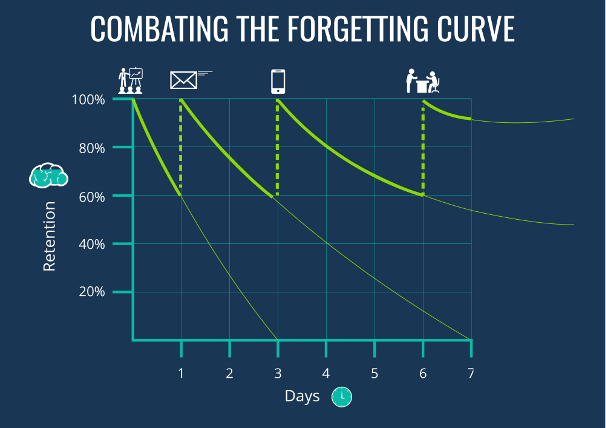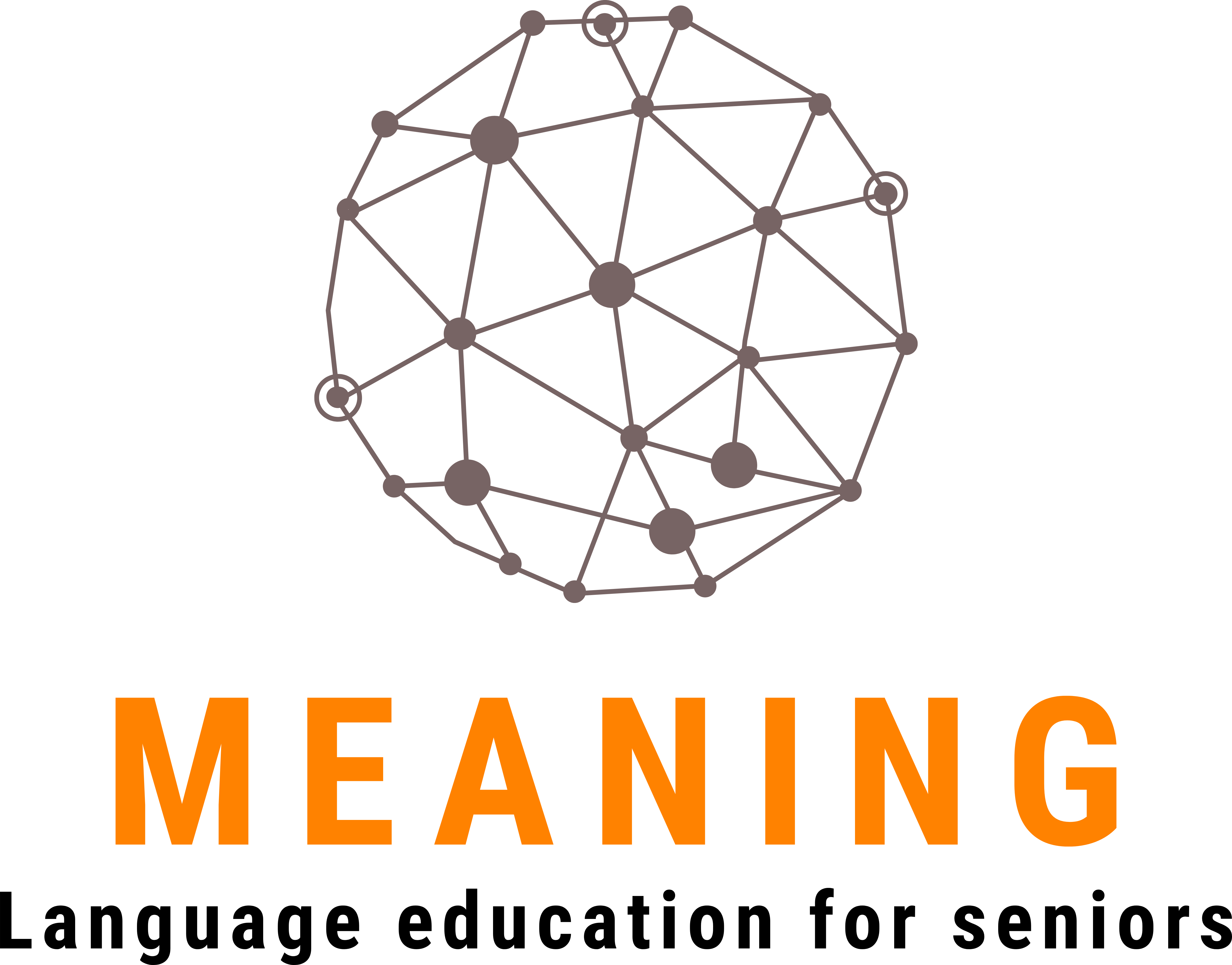
https://elearningindustry.com/forgetting-curve-combat
The forgetting curve and spaced repetition in language learning
If you have ever tried to learn vocabulary, you are likely to be familiar with this phenomenon: After studying new words for hours on end, you finally feel like you are able to remember everything. But then two weeks later, when trying to recall those words, your mind suddenly draws a blank, and you are unable to really recall anything at all.
Luckily, there are several things you can do to combat this very problem, with the most important probably being the forgetting curve. But what is the forgetting curve, and how can you use it to make your language learning process’ more efficient and effective?
What is the forgetting curve?
After a series of experiments, German psychologist Hermann Ebbinghaus was able to gain several important insights into learning and memory. As one of the results of his research, the forgetting curve serves as a visual representation of the way learned information disappears at an exponential rate, resulting in a drastic loss of memory, especially in the first couple of days. This is why, after a few days, you only seem to be able to recall a small fraction of the content.
How can you combat the forgetting curve?
But the important part for language learners, and learners in general, is of course the question of how we can increase the amount of information we are able to recall and how we can transfer knowledge from our short-term memory to our long-term memory, so we don’t have to relearn the same vocabulary every few days.
Now, this is where the concept of spaced repetition comes into play. By reviewing the material in increasing intervals between sessions, you can prevent this very loss of information. As for the specific design of your study schedule, it is recommended to play around with different intervals until you find something that works for you. A popular approach, however, is reviewing the material 1 day, 7 days, 16 days, and 35 days after the point where the information is first reviewed.
How to make things easier for yourself?
While it is possible to manage a spaced repetition review system traditionally on paper by yourself, for example with separate boxes for each interval, keeping track of all the different intervals between review session and knowing when to review what information, can quickly become quite a tedious and confusing task. Luckily, nowadays, there are numerous digital tools that do just that for you.
One of the best-known and most popular of these tools is Anki. Anki is a digital flash card application with a built-in spaced repetition algorithm to help you learn information as easily and effectively as possible. Depending on how difficult the word is for you to recall, the program automatically determines the optimal interval until your next review-session. Trickier words and words that are harder to remember will therefore show up more frequently than those that you are able to recall easily.
Another one of these tools is StudySmarter, which is available as both an App and a website. It is pretty similar to Anki, but has a much more appealing and intuitive interface, making it much easier to use for those who are not incredibly tech-savvy.
But whatever application you end up choosing, being aware of the forgetting curve and incorporating spaced repetition into your study process’ will benefit you and your language learning journey greatly.
